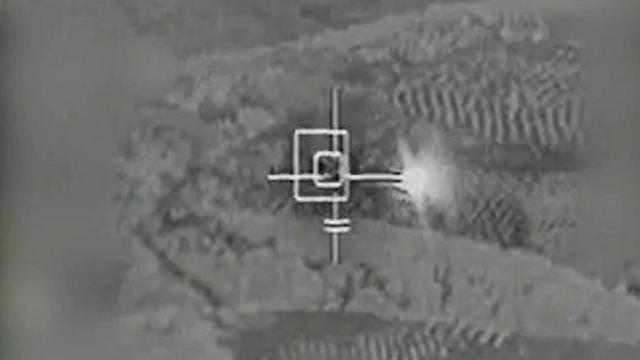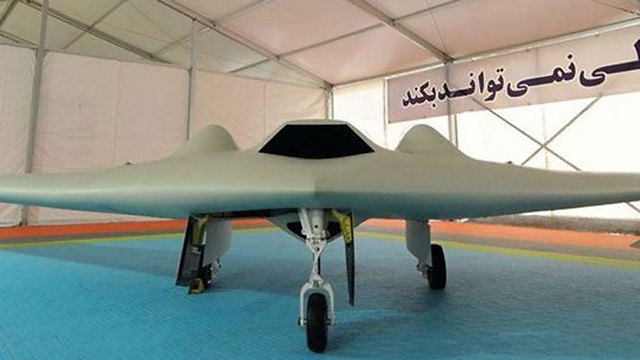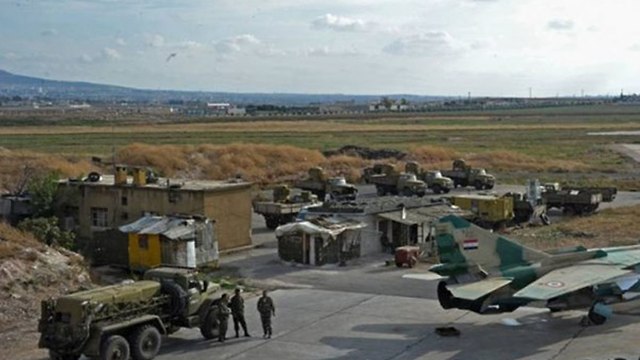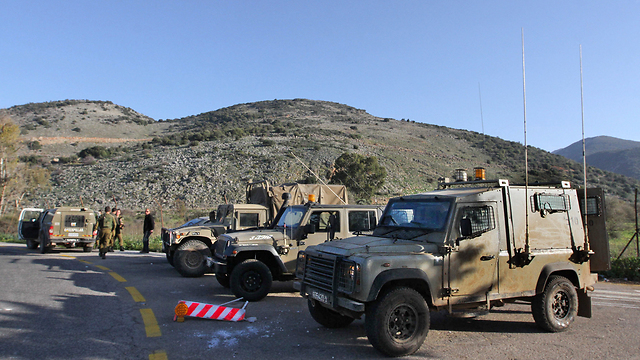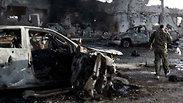
IDF preparing for Iranian retaliation in the air, abroad or through a cyber attack
Analysis: Military officials believe Iran is determined to respond to Monday’s attack on its drone base in Syria, which killed Iranian soldiers, as soon as possible. Revenge could be taken directly or by one of Iran’s proxy organizations, through a rocket barrage from Syria, a terror attack near the fence or abroad, or an attack on Israeli computer systems.
It’s still unclear how the attack carried out by the United States, Britain and France on Syrian centers for the development and production of nuclear weapons will affect the high tensions between Israel and Iran following Monday’s strike. On the surface, these are two different developments, but they have taken place on the same week.
The IDF is preparing for an Iranian response, but believes it will be measured and proportional. It’s unclear whether it will involve Israeli casualties, which could lead to an escalation in the already explosive arena.
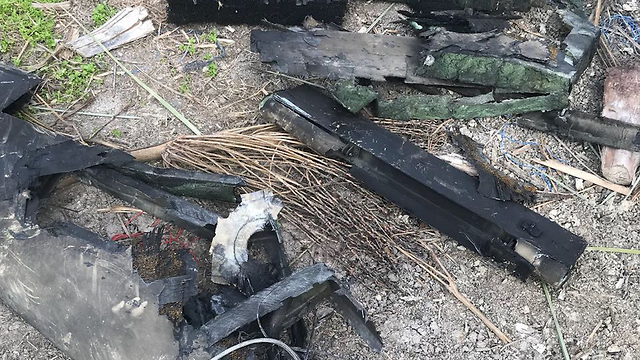
Defense establishment officials are already sensing an Iranian revenge “in the air,” as several moves made after the strike point to an Iranian commitment to retaliate against Israel: The admission that Iranian officers were killed in the strike; their intentionally public funerals in Tehran, which received wide media coverage (unlike attempts to conceal the existence of Iranian casualties in previous incidents ), Moscow’s unusual exposure of the identity of the country that carried out the strike, and the repeated declarations from Iranian officials that Israel’s actions would be met with a counterblow.
Israel’s revelation Friday evening, that the Iranian drone which infiltrated the Jordan Valley from Syria about two months ago and was shot down by a fighter jet had been tasked with carrying out a direct Iranian terror attack on Israeli territory for the first time in history, was no coincidence. It was Israel’s way of signaling to the players involved in the region that Iran is already operating directly against Israel, using violent aggression above and below the surface, which is why the IDF must prevent an Iranian entrenchment in Syria.
Israel is trying to prevent a possible Iranian attack by conveying messages through indirect channels, providing good reasons why the players on the other side stand to lose from such a move: The Iranians, who will be attacked in retaliation; the Syrians, if they allow an Iranian retaliation from Syrian territory; and the Russians, who have trouble reaching stability in Syria as long as the Iranians try to carry out terror attacks from there.
In any event, these are the Iranian options for another day of battle with Israel.
An attack through proxies or a direct blow?
If Iran does attack, it has two main ways of doing so. The first way is the traditional way, through a proxy, like Shiite cells in Syria or cells supporting the Assad regime, which will carry out an attack against an Israeli target in the north.
Iran’s biggest and strongest proxy in the Middle East, Hezbollah, likely won’t be eager to get involved and attack Israel for the Iranians, but it’s possible. There are often disagreements between Hezbollah and its Iranian patrons. Hezbollah has developed independence and has been internally criticized as it is for its bleeding involvement in the civil war in Syria. In general, Hezbollah attacks Israel in retaliation under two conditions: If Israel targeted members of the organization, even outside Lebanon (like the assassination of Jihad Mughniyeh, who was killed—according to foreign reports—by the IAF in the Syrian Golan Heights in early 2015), or if Israel carries out a strike on Lebanese territory.
We must not rule out the possibility that the retaliation will be carried out by Hezbollah fighters from Syrian territory, to keep Lebanon away from the IDF’s response. Operationally and perceptually, it would be easier for Iran to retaliate through a local terror contractor, or a semi-proxy. That’s what happened in the summer of 2015, when a barrage of rockets was fired from Syria to the Golan Heights and the Hula Valley by a cell of a Syrian militia supporting the regime, which was operated by Saeed Izadi, a senior Revolutionary Guards commander who is active in Syria.
A drone or rockets
Iran could launch a rocket barrage from Syria to the northern communities. To intensify its retaliation message, it could direct the barrage at a major city like Haifa and Tel Aviv. Even if the rockets fail to hit a population center or are intercepted by the Iron Dome battery deployed in northern Israel, the panic they would cause among the public and the fact that air raid sirens would sound in a large city in Israel could be enough for the Iranians in terms of the perceptual result of the attack.
This possibility has a relatively higher chance of being implemented compared to the other options. The rockets could be fired from deep within the Syrian territory, the operational feasibility is relatively simple compared to the other options, and the weapons are available.
Other options mentioned here could be implemented too, but unlike a rocket barrage, they require operational preparations that could take weeks or months, and that would wear out the deterring message Iran wishes to convey.
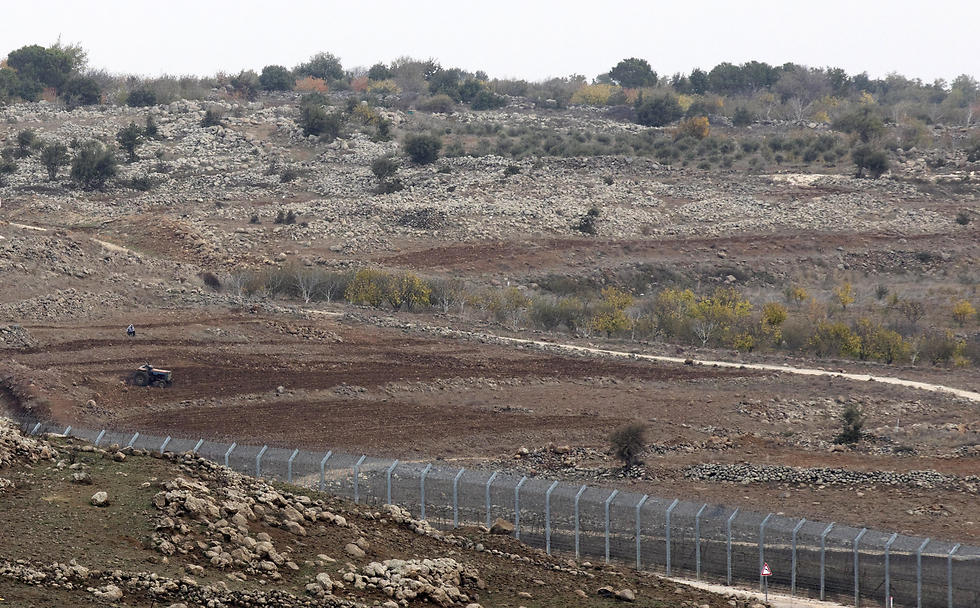
There is also a possibility that Iran will respond by launching another drone strapped with explosives. Although the Iranian base in Syria was seriously damaged in Monday’s attack, Iran may still have capabilities to convey a double message: Taking revenge against Israel, while strengthening deterrence and drawing an Iranian red line concerning attacks on its assets to Syria, and showing Israel that it has additional drones. Such a drone, according to past experience, would be detected by Israel shortly after taking off from Syria.
An underground explosion in the Golan Heights
Unlike the intimidation messages spread in Israel in recent months, the Iranians aren’t actually on the fence on the Israel-Syria border. There are Iranian advisors in the Syrian Golan Heights who are offering support to Assad’s forces in the areas controlled by the regime, but the main Iranian presence is deep within Syria.
A visit to the border early last week and a conversation with a senior officer from the Bashan Division, which is responsible for the border area, revealed that the rebels still control most of the area near Israel. Having said that, Bashar Assad is encouraged by the successful occupation of the Beit Jan area in the Syrian Mount Hermon, that and may prompt him to launch a move that would include a maneuver to occupy most of the area he has lost in the Golan Heights.
An Iranian retaliation attack in the Golan Heights could take place, therefore, in one of the areas controlled by the regime, like New Quneitra in the northern Golan Heights. If this happens, the attack will likely be carried out by a local militia that supports the regime and was sent by the Revolutionary Guards.
Both the rebels and the regime in the Syrian Golan Heights are not short of weapons, including near the fence: Tanks, armored personnel carriers, antiaircraft missiles and machine guns. Such an attack could include a barrage of antiaircraft missiles and mortar shells fired at an IDF force or a military post near the fence, like Hezbollah’s retaliation for Jihad Mughniyeh’s assassination between the village of Gjajar and Mount Dov on January 2015, which killed a Givati officer and a fighter.
An overseas or cyber attack
Iran is very active around the world in spreading its radical doctrine through terror. It has acted against Israeli targets abroad several times in the past decade, with or without Hezbollah, in Bulgaria, India, Thailand and Cyprus. This option hasn’t been implemented as much in recent years, thanks to a series of Israeli activities and the strengthened deterrence against Tehran and Hezbollah, but an implementation of this option at this time could just be a matter of making a decision.
Another option has to do with a direct cyber attack from Iran or through a proxy. This is a softer option, but it will definitely be felt in Israel. In the past two years, Iranian hackers have been trying to directly attack the IDF and enter its systems, so the Iranian motivation and ability to attack in the cyber realm—a target which will harm Israeli citizens and is less immune than the IDF, like Israeli banks or cellular providers—definitely exist. Such an activity could disrupt many Israelis’ lives, even if it’s only for several hours.










